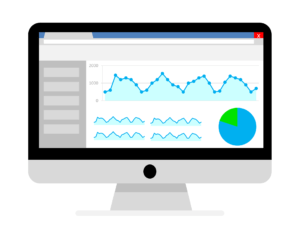Google Analytics, which is a free service that collects and presents visitor data about websites, is an essential digital marketing tool. Its wealth of data can offer valuable insights into how potential customers interact with your site if you know the expert tricks of how to navigate it.
5 Google Analytics Metrics to Keep an Eye on
1) Page Views
If you are interested in improving your website traffic, the first step is to analyze your performance metrics, like page views.
The most basic of all metrics, page views, will tell you how many visitors successfully accessed the content on your website. You can use these statistics to analyze which pages on your site are performing better than others. For example, Analytics could tell you if your video pages are drawing more views than blog posts.
2) Sources for Incoming Traffic
Google Analytics also offers other metrics on incoming traffic, including these four categories:
- Direct visitors (people who type your exact URL into the Google’s search bar)
- Search visitors (those who find your site from the results of a search query)
- Referral visitors (people who visit your website because it was mentioned on another website or blog)
- Social media visitors (those who were directed to your site through posts on social networks, like Facebook and Twitter)
If you monitor this data regularly, you will notice patterns that can help you make adjustments in your online marketing strategy.

3) Interactions per Visit
Next, you are probably curious about what your visitors are doing once they reach your website. If you are using web design best practices, your visitors are likely navigating from one page to another as they move through the buyer’s journey. If they are not viewing multiple pages, you can make web design changes that will encourage visitors to click on a call-to-action or fill out a conversion form.
4) Bounce Rate vs. Exit Rate
As you delve deeper into the Google Analytics dashboard, you will find two very important digital marketing metrics: bounce rate and exit rate.
- Bounce rate measures the percentage of visitors who viewed one page and left your website without clicking on any other pages.
- Exit rate measures the percentage of visitors who viewed multiple pages and then left your site completely.
These two metrics are an indication about the performance of your web pages. For example, if a high percentage of people are viewing your services page and then exiting your website you might need to update the page’s content.

5) Lead Generation Costs
Lead generation costs tell you how much you are spending for each prospect you gain through your website. It puts an understandable dollar value on each conversion. With this information, you will be able to make adjustments in the way you attract visitors to your website. For example, you may learn from this metric that you are spending too much or too little on pay per click advertising.
Because of the effectiveness of these five metrics and others, Google Analytics is one of the best resources to use to learn about the performance of your website.


